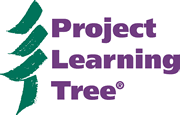As an educator of pre-service teachers, my hope and advice to all teachers is that you learn along with the children you teach. The more you (whether you are an aspiring teacher, new to the profession, or a veteran) see and value yourself as a learner too, the easier it becomes to allow children the latitude to discover and develop in directions that are not always “part of the lesson plan.”
Project Learning Tree is a great teaching tool that I use with future teachers. It ensures that when these new teachers leave my college classroom, they are equipped with not only lesson plans they can easily incorporate into their own classrooms, but also materials, extension tools, and skills that enhance their students’ learning and their own education and teaching skills.
I teach an Education and Curriculum Instruction course at Casper College for Elementary Education majors in Wyoming. In a seminar, entitled “Life Science in the Elementary Schools,” students take Biology class content and learn how to transfer basic science concepts to elementary aged students.
Inquiry and discovery are important pedagogical skills, and Project Learning Tree (PLT) is extremely well designed for conveying this approach. After experimenting with many different methods of teaching this class, I have chosen to use PLT, partnered with Project WET and Project Wild, to address topics that my students will need to teach in the life sciences.
One of the most difficult parts of the course, yet one of the most important concepts for my students to learn, is the ability to “close the loop” on a lesson. All PLT activities allow students to learn through discovery and inquiry, but oftentimes students do not always recognize the importance of what they discovered or how it relates to the topic at hand. Through the use of pertinent questions and the ability to lead discussions with children in their classroom, PLT assists these beginning teachers in helping their students “discover what they discovered.”
In order for my beginning teachers to learn these methods, I exhibit model behavior in my college courses. I begin classes by presenting activities, with my students as participants, demonstrating how to effectively ask questions and lead discussions. Students then present their own PLT activities using some of the strategies I modeled in order to practice “closing the loop” on their own.
Some of the PLT activities I use to help students learn to “close the loop” are: “Water Wonders,” “Renewable or Not,” “Earth Manners,” “Tree Cookies,” “Every Tree for Itself,” “Tree Factory,” “Signs of Fall,” and “Poet Tree.” Each of these activities lends itself well to discovery and discussion.
Below is an outline of how I use PLT’s “Water Wonders” activity as a model to follow. Prior to the activity, I discuss the water cycle with my college students using the following questions:
“If you were to assign a shape to the water cycle, what shape would it be?”
“What would you add to that shape in order to more fully illustrate the water cycle?”
These general, open-ended questions generate information that the class already knows about the water cycle.
Next we conduct the PLT activity and its various extensions: we read a water cycle poem; we do a water cycle dance; we create water cycle bracelets. These activities represent the discovery portion of the learning process.
Then I model questions, such as:
“What did you notice about your life as a water molecule?”
“What do you notice about your bracelets?”
“Why do you think that each bracelet is different?”
“Looking at the illustration we made earlier, what are some things that you would like to add or change? Why?”
“How does this model compare to the illustrations that are typically used to describe the water cycle?”
“How has your mental image of the water cycle changed?”
“How does this relate to other cycles?”
“Who can summarize what we’ve discovered today?”
When children engage in PLT activities they always have fun, but it’s important for their teacher to help them understand the lesson behind the activity. Helping students identify what they just learned reinforces student learning. A sequential questioning strategy allows a teacher to lead students in such a way that enables each learner to “figure it out on their own.”
The questioning strategy is simple, but does take practice. First, ask open questions that anyone can answer based on their current knowledge and previous experiences. Second, ask questions that focus on particular parts of the activity. Third, ask questions that cause the students to compare and contrast, make connections, and interpret information that was generated. Last, ask questions that help students summarize the material.
This questioning strategy supports proven and tested learning cycle pedagogies, and is clearly embedded in PLT activities as ways to enhance and assess student learning. This process empowers students to arrive at intended conclusions in simple ways, and it reinforces thinking skills that children need to develop and hone.
PLT materials not only offer ways to teach “how to think, not what to think,” but also provide a multitude of suggestions for “closing the loop.”
As college students leave my class and move on in their education and careers, I know that with the help of PLT they take with them the ability to use the wide range of materials that they gather, and provide their students the direction to discover and form connections. My advice to beginning teachers is to relinquish some authority in order for your students to gain more control over their own learning. In doing so, your students will become learners responsible for their own education.
Tammy Brown is the Wyoming PLT State Coordinator and Adjunct Faculty at Casper College, Casper, WY.


